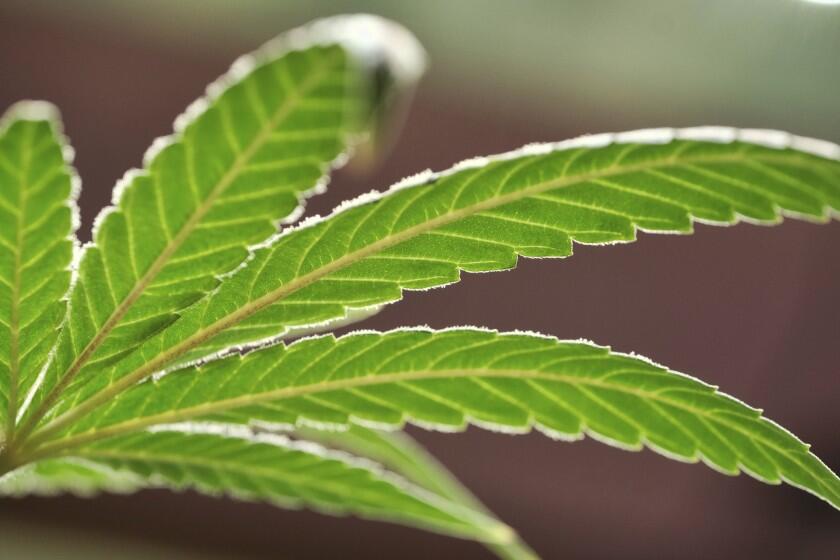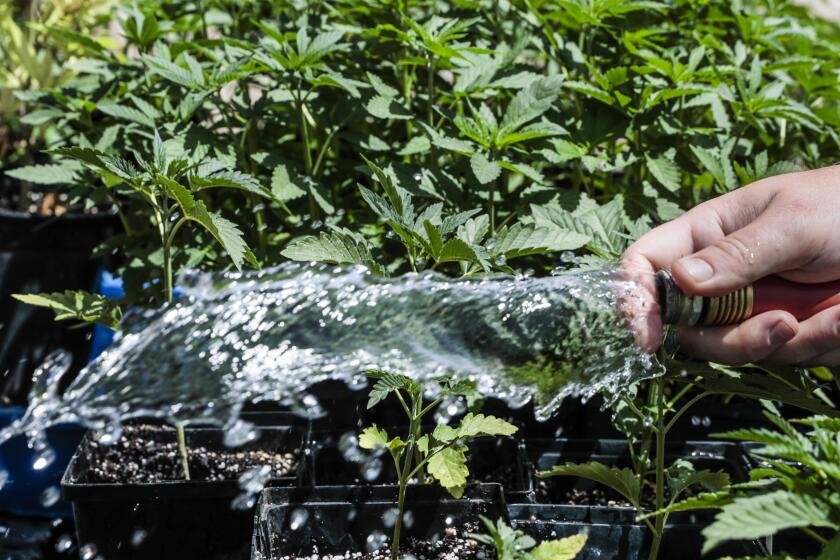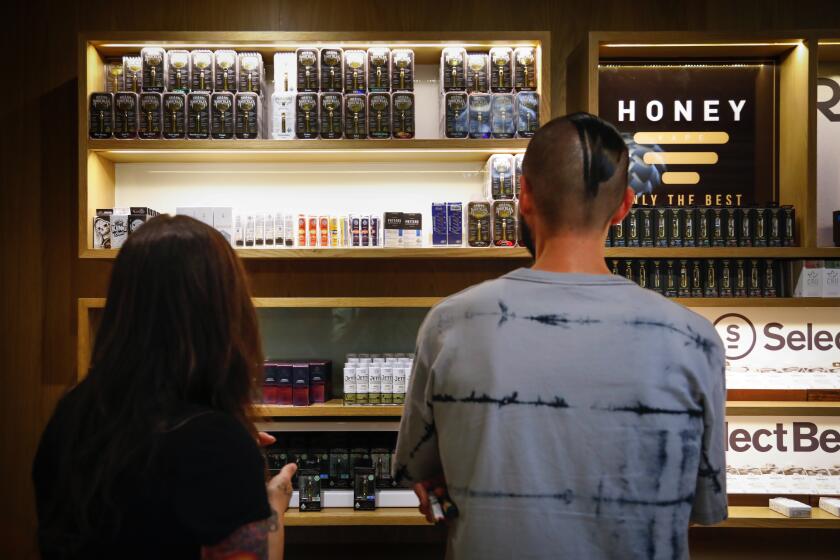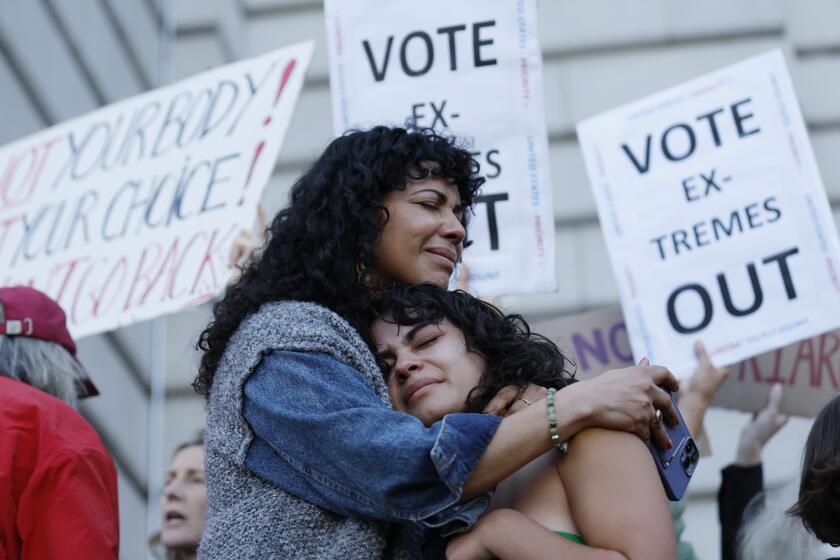Editorial: Biden’s plan to reschedule marijuana may finally end ‘Reefer Madness’

- Share via
The U.S. Drug Enforcement Agency plans to reclassify marijuana from the most restrictive category — Schedule I, up there with heroin — down to Schedule III, in the company of testosterone and Tylenol with codeine. This does not mean that the federal government is giving its blessing to the use of cannabis as a recreational drug. But it does recognize that there are medicinal uses for marijuana, and lower chances that it will be abused than highly addictive drugs.
The change in classification would be a major step toward clearing up the myths about cannabis. “Reefer Madness,” a 1936 movie intended to dissuade teens from trying marijuana, made claims of danger so outlandish that it has been widely mocked for more than half a century. At the same time, cannabis fans portray the drug as utterly mild, totally safe and a near-panacea.
Editorial: Reclassifying marijuana is not decriminalization, but is a welcome step in that direction
Taking cannabis out of the most-dangerous-drug category is almost literally the least the federal government can do on the subject. Further work is needed to catch up with Americans’ knowledge and practice.
What we know so far is that neither extreme has it right. The limited studies conducted up to now indicate that marijuana can help with certain conditions, such as epileptic seizures and nausea from chemotherapy. In fact, the U.S. Food and Drug Administration has approved cannabinoid medications, though their use is highly restricted. Cannabis does not appear to be effective against glaucoma or inflammatory bowel disease, two other claims made in its favor.
We also know that hospitals have seen significant increases in emergency-room visits related to marijuana use, including psychosis.
Why are there still so many unknowns instead of settled facts about a drug that has been widely consumed for medicinal and recreational use for years? Because too few studies have been conducted, and often under conditions that were too restrictive. The medical world needs to know much more. What forms of use are safest and most effective? What drugs might interact badly with marijuana? How much is safe? How often? At what dose? With which varieties of cannabis? What other ailments might be effectively treated with cannabinoids?
Alcohol is far more damaging than cannabis, but only the latter is covered by the Controlled Substances Act. U.S. drug laws need to be totally overhauled.
It’s ridiculous that we lack the answers, especially considering that 24 states (including California) plus the District of Columbia have made marijuana legal for adult recreational use while 14 more have approved it for medicinal use. Our ignorance is the fault of the DEA. Conducting medical trials on a Schedule I drug entails too many hoops to jump through for many researchers. In addition, the DEA has limited research to a tiny set of very weakened cannabis products, most of it from a single source, while dispensaries sell some 700 varieties.
The classification as a Schedule I substance gave marijuana a mystique, an aura of danger, that led to a rebellious embrace of it by people who experienced no immediate signs of trouble — but who also didn’t and still don’t know what is safe and effective even as a recreational drug, or the long-term ramifications. It’s time for this silliness to end.
Consumers should be warned that scientific research shows frequent use of potent weed increases the chance of mental illness.
Marijuana is just a drug, like any other drug that has some psychotropic effects. There needs to be robust research to determine its valid uses, appropriate doses and side effects. If and when the rescheduling occurs, the National Institutes of Health should fund more research and give scientists more flexibility to conduct large trials.
At the same time, the federal government should work on fixing the wild patchwork of laws that conflict with each other and with federal policy. Right now, people cannot take marijuana — unless it is one of the FDA-approved products — across state lines, even if the drug is legal in both states. It cannot be taken on a plane or in a national park, even when the park is in a state where marijuana is fully legal. And federal employees and contractors are banned from using marijuana, though it is fully legal in the District of Columbia.
The federal government’s decision to treat marijuana like heroin while many states have chosen to treat it like alcohol has led to a tangle of laws and uncertain research. Reclassifying marijuana as a Schedule III drug gives it a chance to clean up the mess.
More to Read
A cure for the common opinion
Get thought-provoking perspectives with our weekly newsletter.
You may occasionally receive promotional content from the Los Angeles Times.













